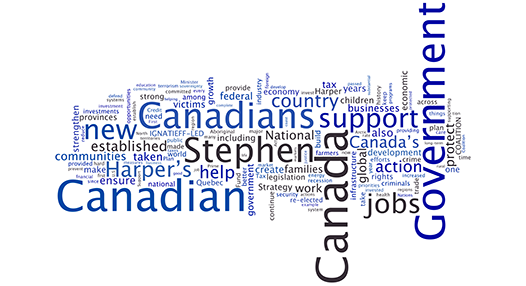I’m thrilled to see David Bruggeman (Pasco Phronesis blog) make a suggestion about a way to include a science debate during the current Canadian federal election campaign. In his Aug. 16, 2015 posting, David notes his suggestion follows on an opinion piece in the Toronto Star (Note: A link has been removed),
Thanks to Twitter, I read this opinion piece in The Toronto Star advocating for science to be part of the leaders’ debates leading to the October 19 [2015] Parliamentary election. Breaking from previous tradition, there will be not two debates (one in English, one in French), but at least six. …
I think the compressed campaign schedule (though it is the longest Canadian campaign in history) will make it difficult to get either a debate exclusively on science questions or science questions into the debates that will be held.
… I would recommend not copying those of us on your southern border concerning science debates. [emphasis mine] Rather I suggest you review our British cousins and adapt your strategy accordingly. Two science questions were part of a UK leaders debate in the 2010 campaign (though it was the one conducted over YouTube and Facebook), but that same campaign saw three cross-party debates at the science ministerial level. [emphases mine] …
I think it manageable to have the science minister and his shadow minister counterparts in the major Canadian parties debate each other.
Interesting idea and I like it! Unfortunately, I’ve never heard of an election debate amongst shadow ministers/critics in the Canadian context, which means there’s nothing to build on. However, the advantage for this particular election campaign is that this is a three horse race (meaning no one party is clearly in the lead) consequently, election organizers for the three parties might be more open to opportunities which might gain some election votes.
As for the opinion piece (Aug. 12, 2015) in the Toronto Star written by Katie Gibbs and Alana Westwood, both from Evidence for Democracy, they outline their reasons for a science debate in Canada’s 2015 federal election,
Canada’s commitment to science, and our scientific capacity, made us an international leader for years. It was Canadian medical researchers who decoded the breast cancer genome, invented medical insulin and have developed a promising Ebola vaccine. Social scientists and statisticians help us understand our changing demographics, guiding decisions on everything from where to build new schools and hospitals to helping businesses make smarter investment choices. Right now, environmental scientists are using their expertise to guide the fight against forest fires in British Columbia and Saskatchewan.
…
Evidence for Democracy analyzed debate questions in all the televised English-language federal leaders’ debates from 1968 to 2011 (with the exception of 1997, for which we could not find a record) to see which topics were discussed. Unsurprisingly, 32 per cent of all debate questions focused on the economy — taxes, unemployment, trade agreements, etc. Social policies including medicare, child care, and women’s issues covered 25 per cent of the questions. Government accountability and ethics accounted for 20 per cent, with national unity, foreign affairs, and public safety making up most of the rest. Only 2 per cent of debate questions focused on protection of the environment.
Gibbs and Westwood asked this question in the piece,
Given the clear importance of science in our lives, why has a question about science policy never — not once — been asked in a federal leaders’ debate?
It’s a very simple answer, the election organizers don’t believe science debates will attract a large audience allowing them one more chance to hammer their election messages home and, perhaps more importantly, they don’t think a debate will garner any votes.
I expect Gibbs and Westwood know this as they go on to make a compelling case for why a science debate in Canada is important (Note: A link has been removed),
Once a world-leader in scientific research, recent decisions have eroded our science capacity and our international scientific reputation. It’s estimated that up to 5,000 federal scientists have lost their jobs, and over 250 research and monitoring programs and institutions have been closed. Our recently launched website called True North Smart and Free, documents dozens of examples of funding cuts to science, government scientists being silenced and policy decisions that ignore the best available evidence. This is essential public-interest science needed to protect Canadian’s health and safety, from food inspection to monitoring toxic chemicals in water.
Many Canadians, including our scientific community are speaking out. Even beyond our borders, the current government has been widely criticized for its treatment of science. In recent years scientists have stepped out of their labs in large rallies on Parliament Hill and across the country. By the thousands, Canadians have joined with them not only in protest but in a shared commitment to strong public science and evidence-based decision-making. Every major Canadian newspaper, including the Toronto Star, has written high-profile editorials on science. Even international media such as New York Times and the prestigious science journal Nature have commented on the decline in Canadian science and the treatment of our government scientists.
Political parties clearly want to discuss it as well. This last session of parliament saw an unprecedented focus on science policy issues with the NDP, Liberals, and Greens all introducing bills and motions aimed at improving the state of public-interest science in Canada.
I hope this is a successful effort for the 2015 campaign. It’s great to see these efforts building up. In 2011, Adrian J. Ebsary of Peer Review Radio worked tirelessly to bring science into that year’s federal election (my April 25, 2011 posting, April 26, 2011 posting, and April 29, 2011 posting). In Québec, Pascal Lapointe has been working for several years to bring science into election debates both provincially and federally. Assuming you’re comfortable reading in French, you can find Pascal’s Je vote pour la science here. It’s all part of his larger enterprise Agence Science-Presse where he makes sure Québeckers get their science news.
Should you choose to support the notion of a national science debate, I suggest contacting the political parties for Canada’s Minister of State for Science and Technology, Ed Holder (Conservative Party, former insurance broker), Stewart Kennedy (New Democratic Party, academic and political scientist), Ted Hsu (Liberal Party; a physicist by training, he’s not running in the 2015 election but remains the party’s science critic for now), and Lynne Quarmby, (Green Party, biochemist and molecular biologist).
Finally, you can find True North Smart + Free here.

